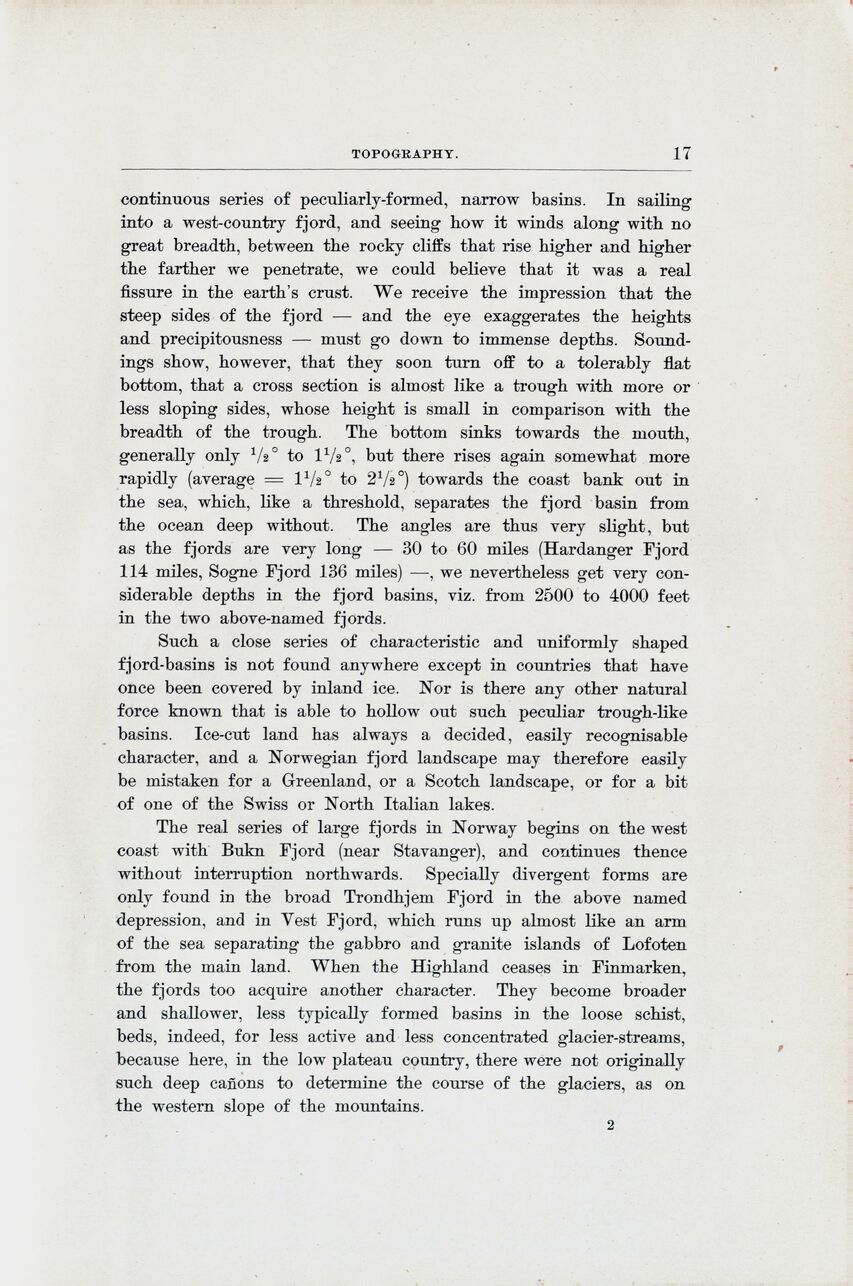
Full resolution (JPEG) - On this page / på denna sida - Topography, by Andr. M. Hansen

<< prev. page << föreg. sida << >> nästa sida >> next page >>
Below is the raw OCR text
from the above scanned image.
Do you see an error? Proofread the page now!
Här nedan syns maskintolkade texten från faksimilbilden ovan.
Ser du något fel? Korrekturläs sidan nu!
This page has been proofread at least once.
(diff)
(history)
Denna sida har korrekturlästs minst en gång.
(skillnad)
(historik)
continuous series of peculiarly-formed, narrow basins. In sailing
into a west-country fjord, and seeing how it winds along with no
great breadth, between the rocky cliffs that rise higher and higher
the farther we penetrate, we could believe that it was a real
fissure in the earth’s crust. We receive the impression that the
steep sides of the fjord — and the eye exaggerates the heights
and precipitousness — must go down to immense depths.
Soundings show, however, that they soon turn off to a tolerably flat
bottom, that a cross section is almost like a trough with more or
less sloping sides, whose height is small in comparison with the
breadth of the trough. The bottom sinks towards the mouth,
generally only ½° to 1 ½° but there rises again somewhat more
rapidly (average = 1 ½° to 2 ½°) towards the coast bank out in
the sea, which, like a threshold, separates the fjord basin from
the ocean deep without. The angles are thus very slight, but
as the fjords are very long — 30 to 60 miles (Hardanger Fjord
114 miles, Sogne Fjord 130 miles) —, we nevertheless get very
considerable depths in the fjord basins, viz. from 2500 to 4000 feet
in the two above-named fjords.
Such a close series of characteristic and uniformly shaped
fjord-basins is not found anywhere except in countries that have
once been covered bv inland ice. Nor is there any other natural
force known that is able to hollow out such peculiar trough-like
basins. Ice-cut land has always a decided, easily recognisable
character, and a Norwegian fjord landscape may therefore easily
be mistaken for a Greenland, or a Scotch landscape, or for a bit
of one of the Swiss or North Italian lakes.
The real series of large fjords in Norway begins on the west
coast with Bukn Fjord (near Stavanger), and continues thence
without interruption northwards. Specially divergent forms are
only found in the broad Trondhjem Fjord in the above named
depression, and in Vest Fjord, which runs up almost like an arm
of the sea separating the gabbro and granite islands of Lofoten
from the main land. When the Highland ceases in Finmarken,
the fjords too acquire another character. They become broader
and shallower, less typically formed basins in the loose schist,
beds, indeed, for less active and less concentrated glacier-streams,
because here, in the low plateau country, there were not originally
such deep cañons to determine the course of the glaciers, as on
the western slope of the mountains.
<< prev. page << föreg. sida << >> nästa sida >> next page >>